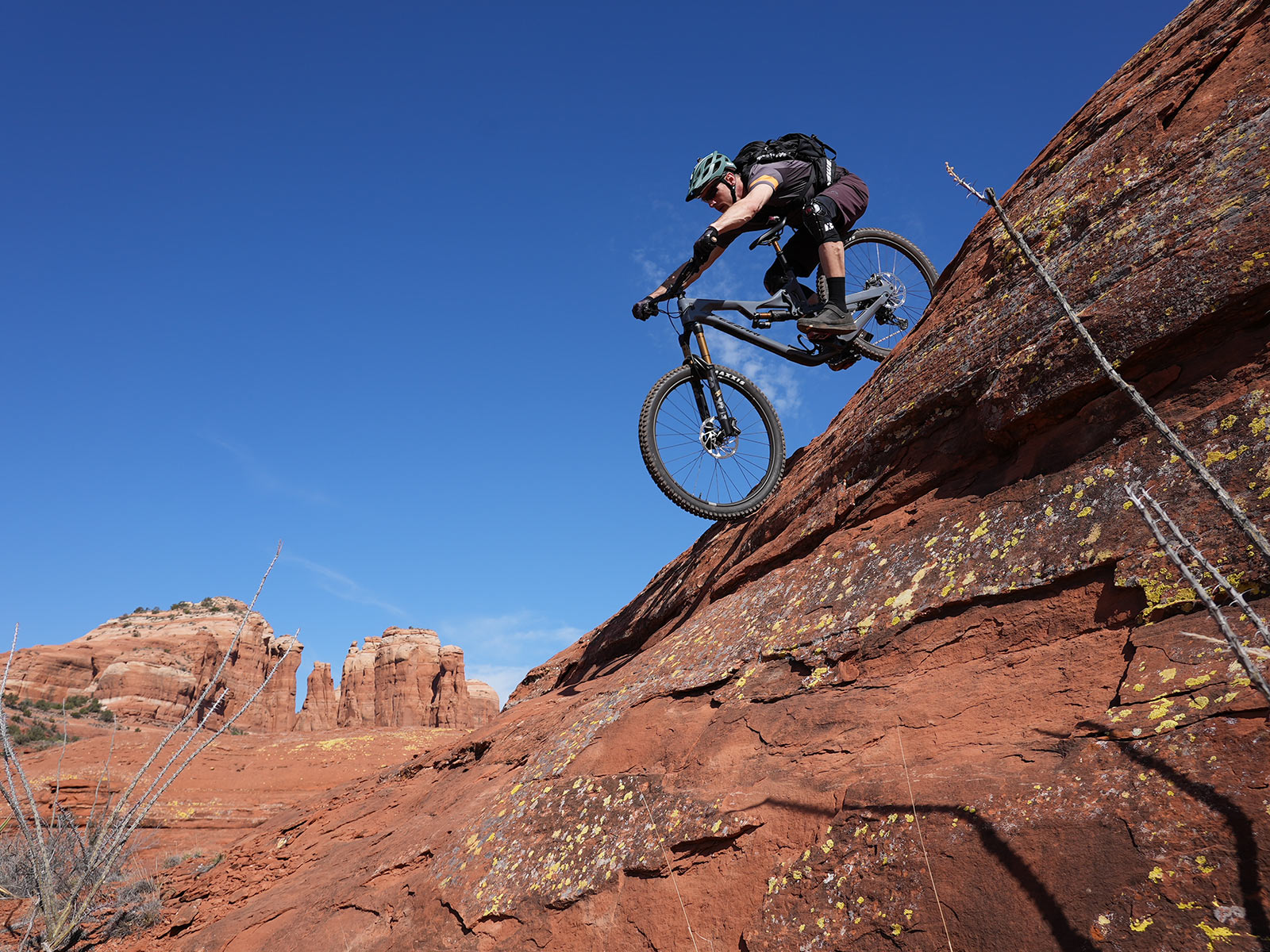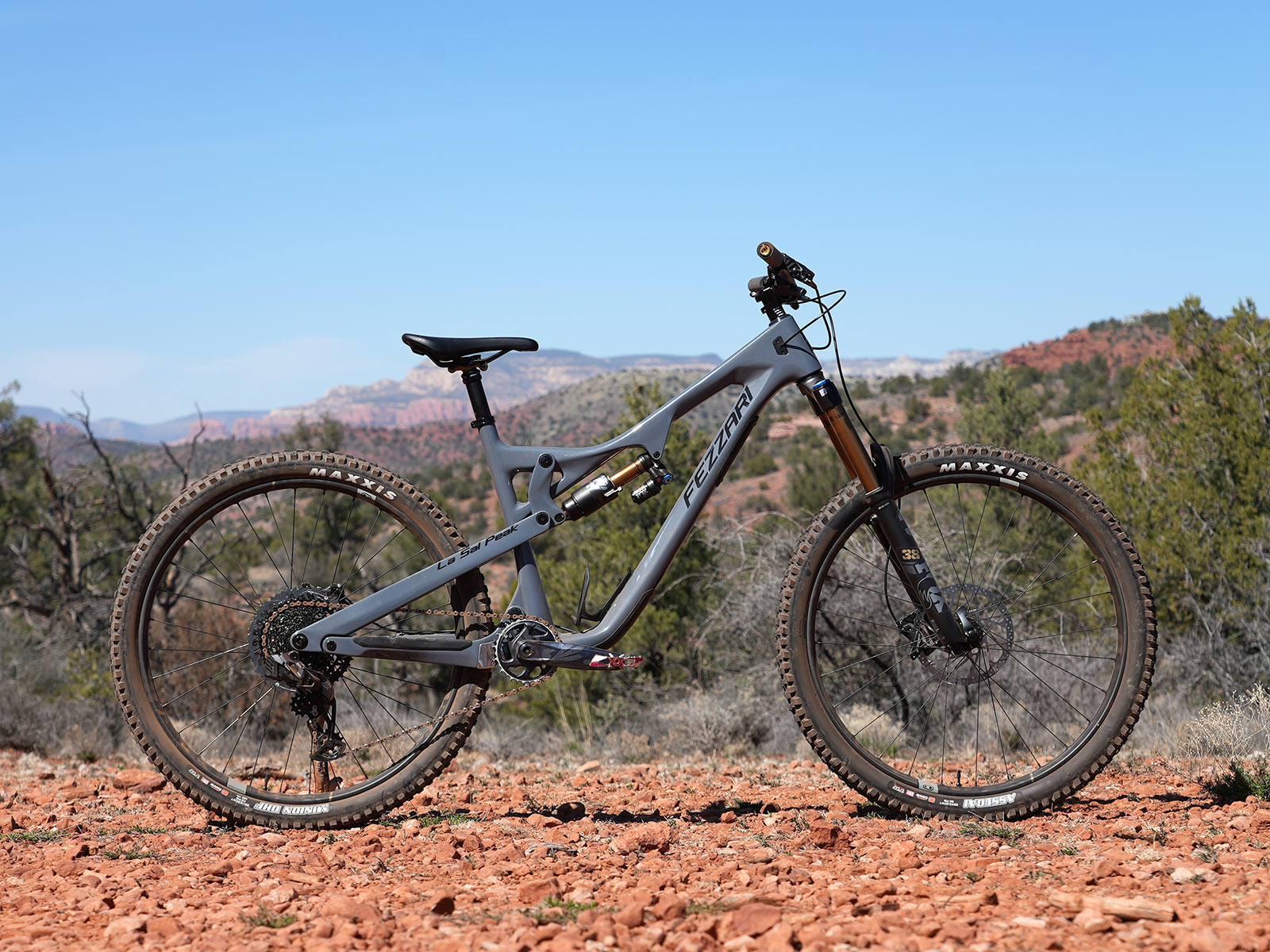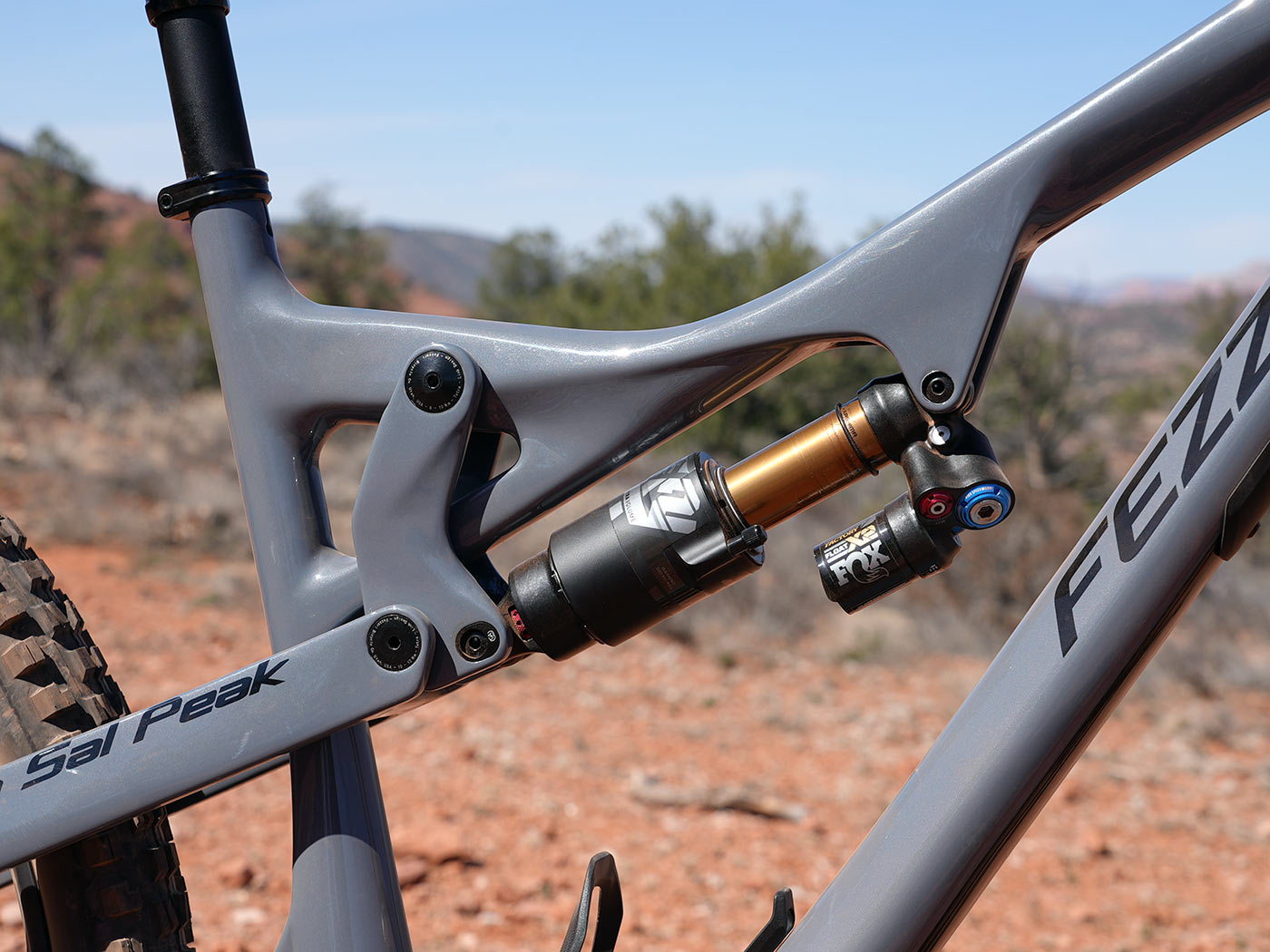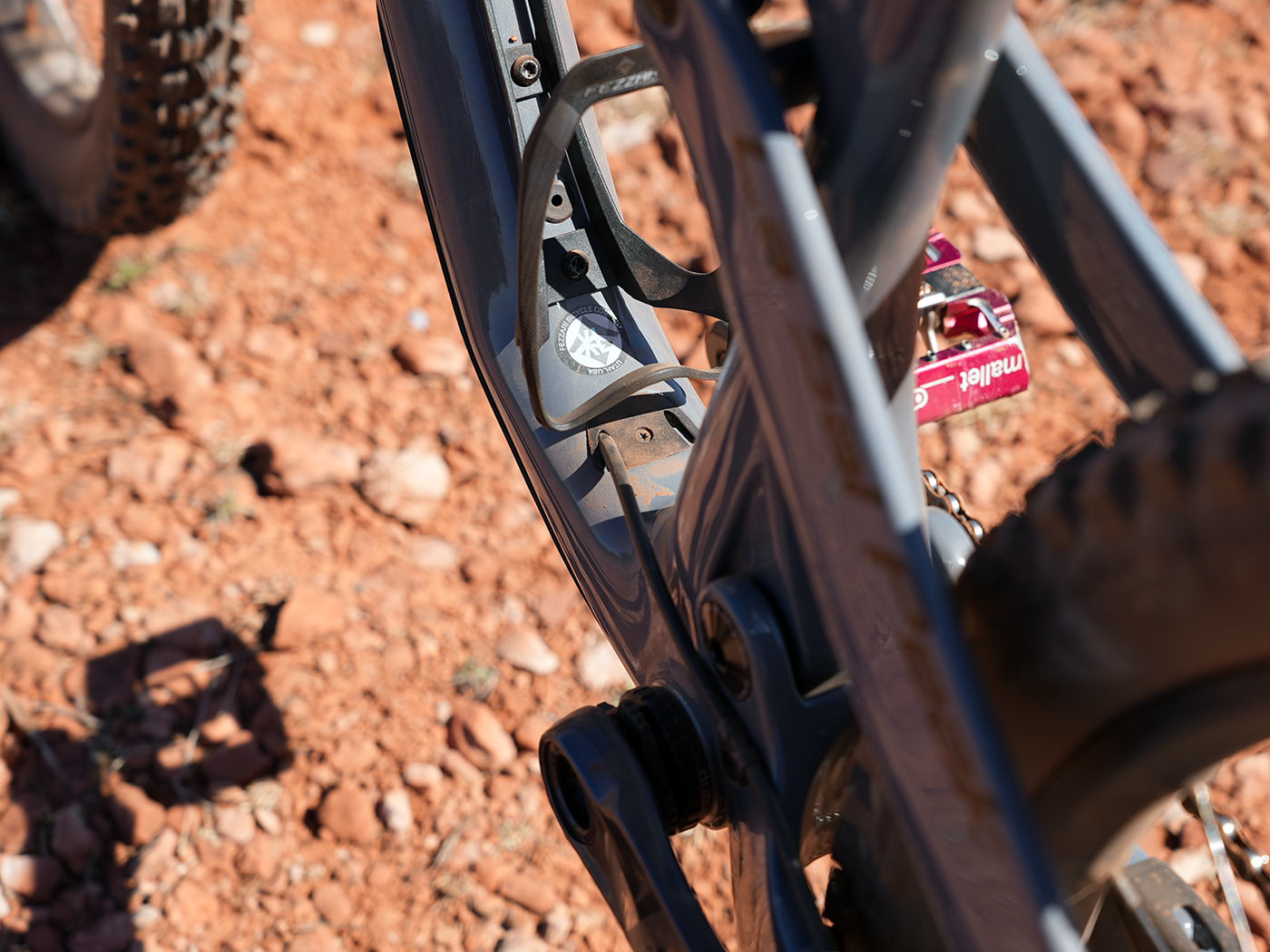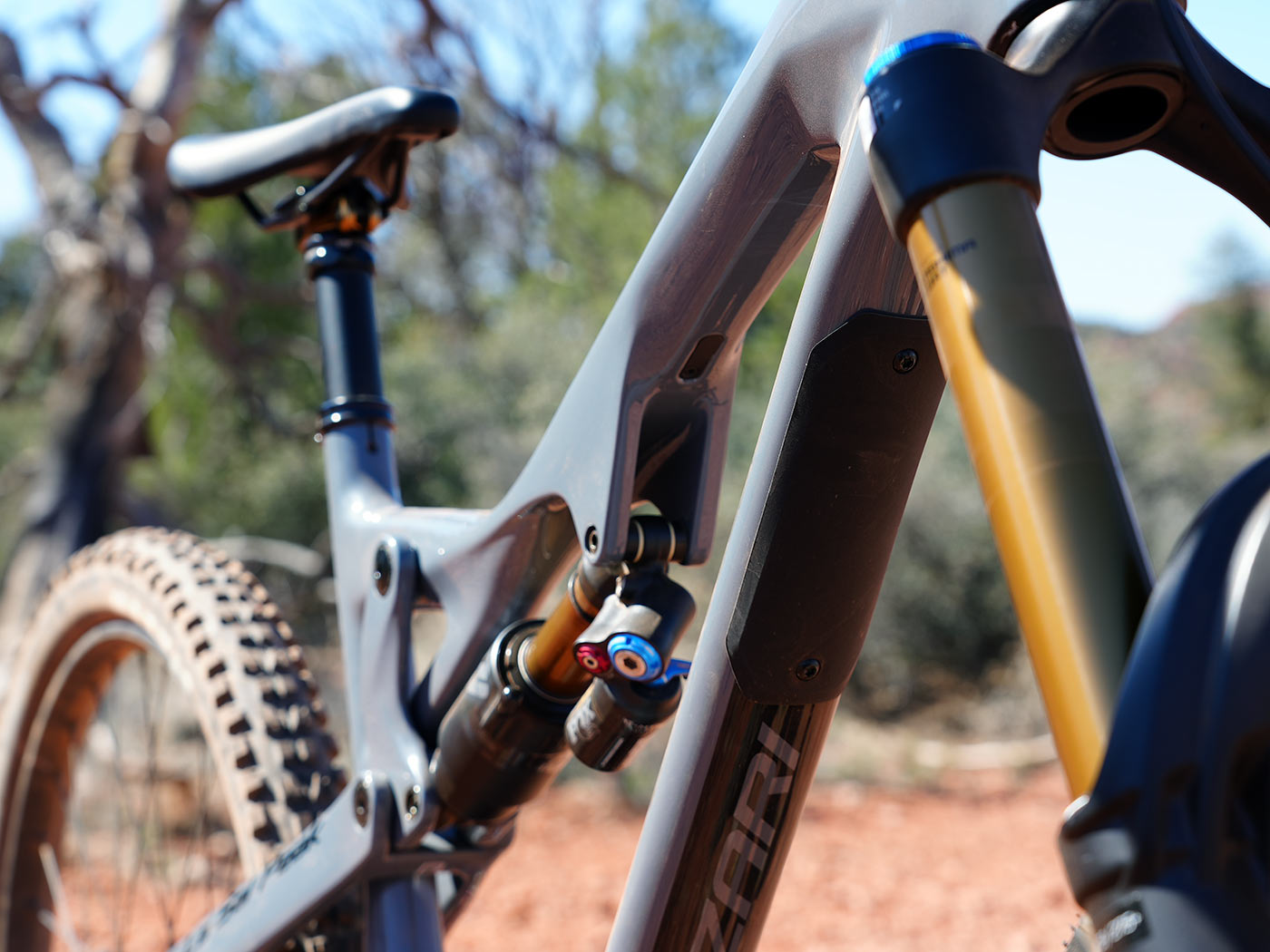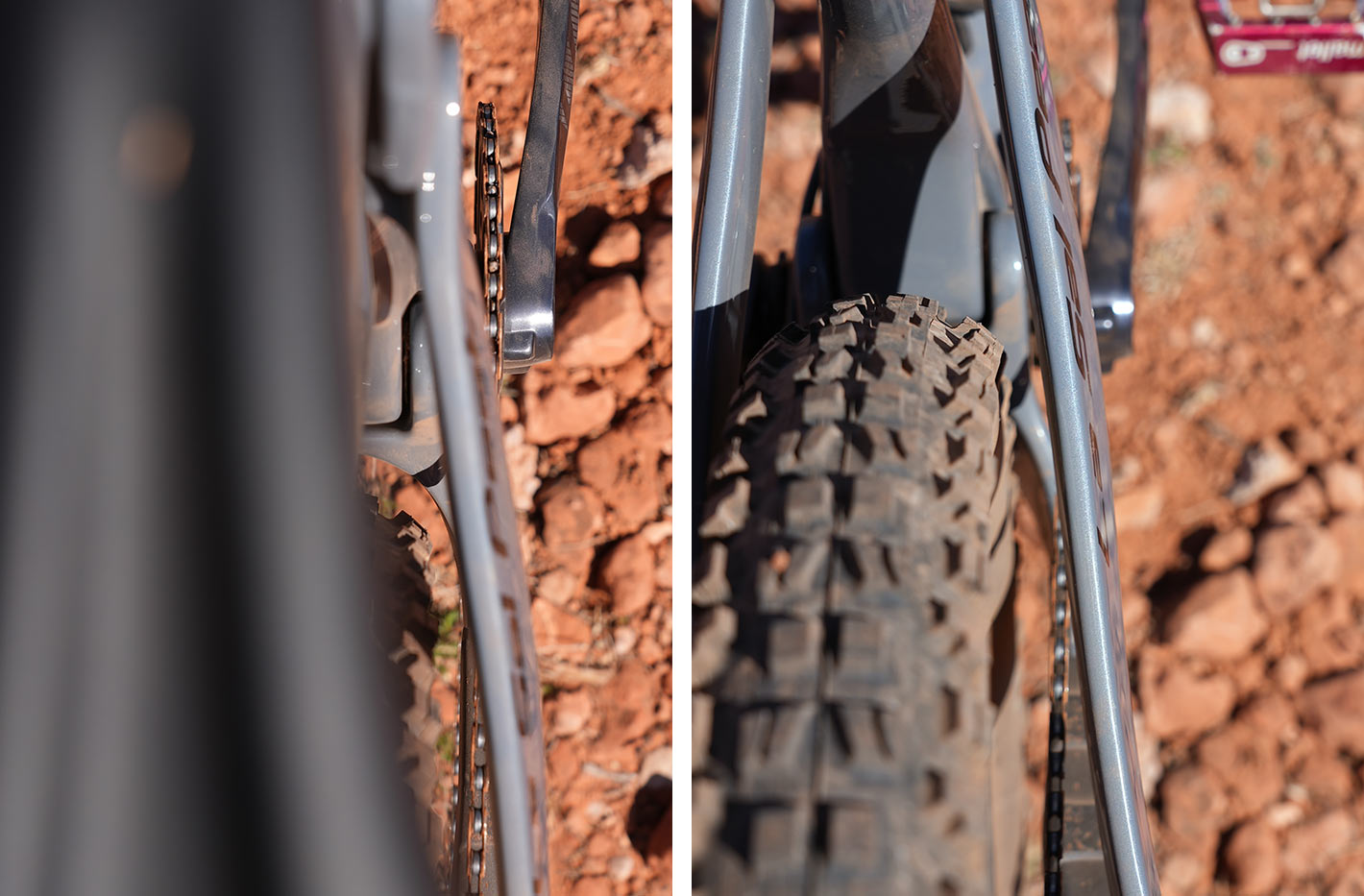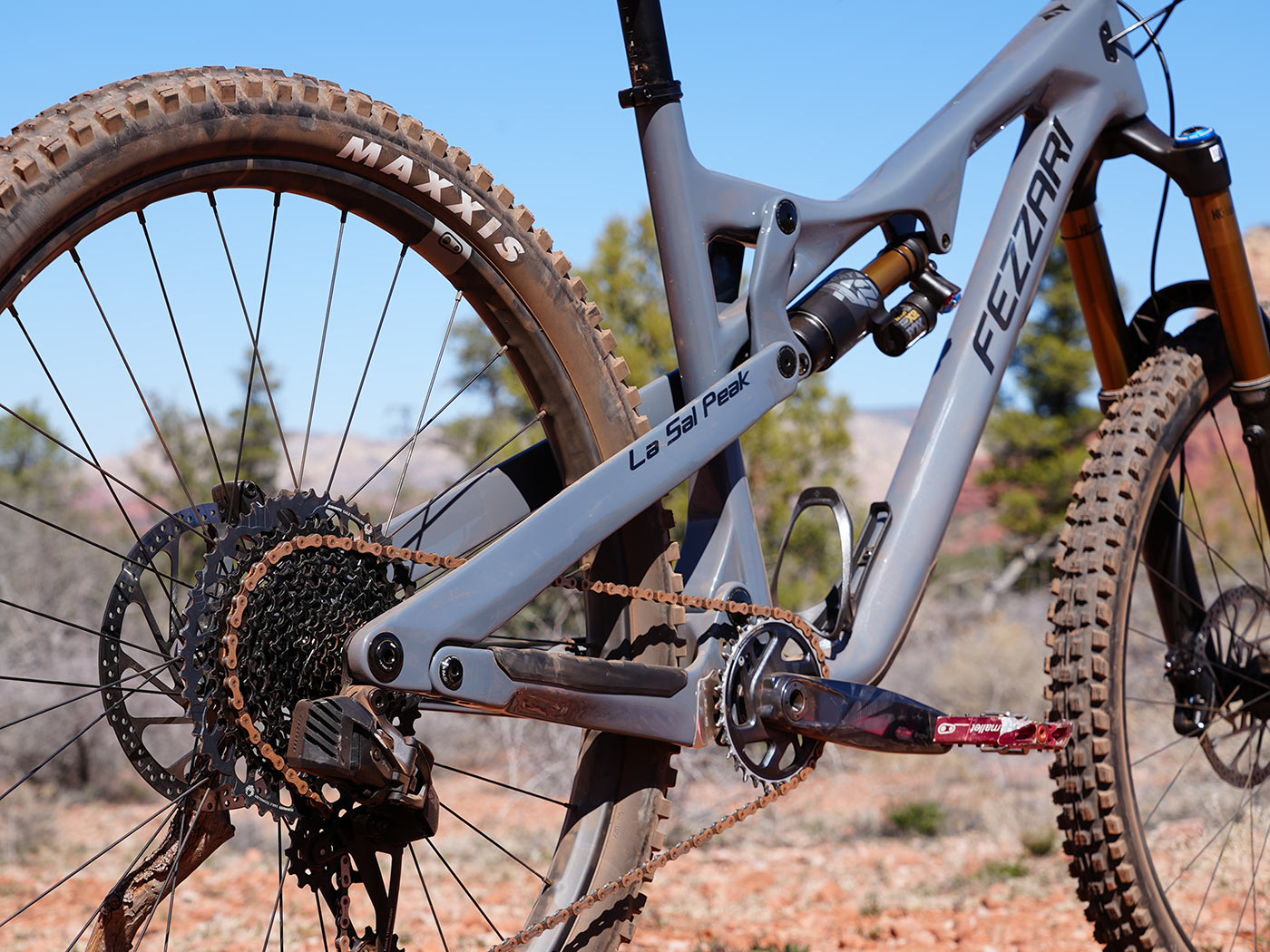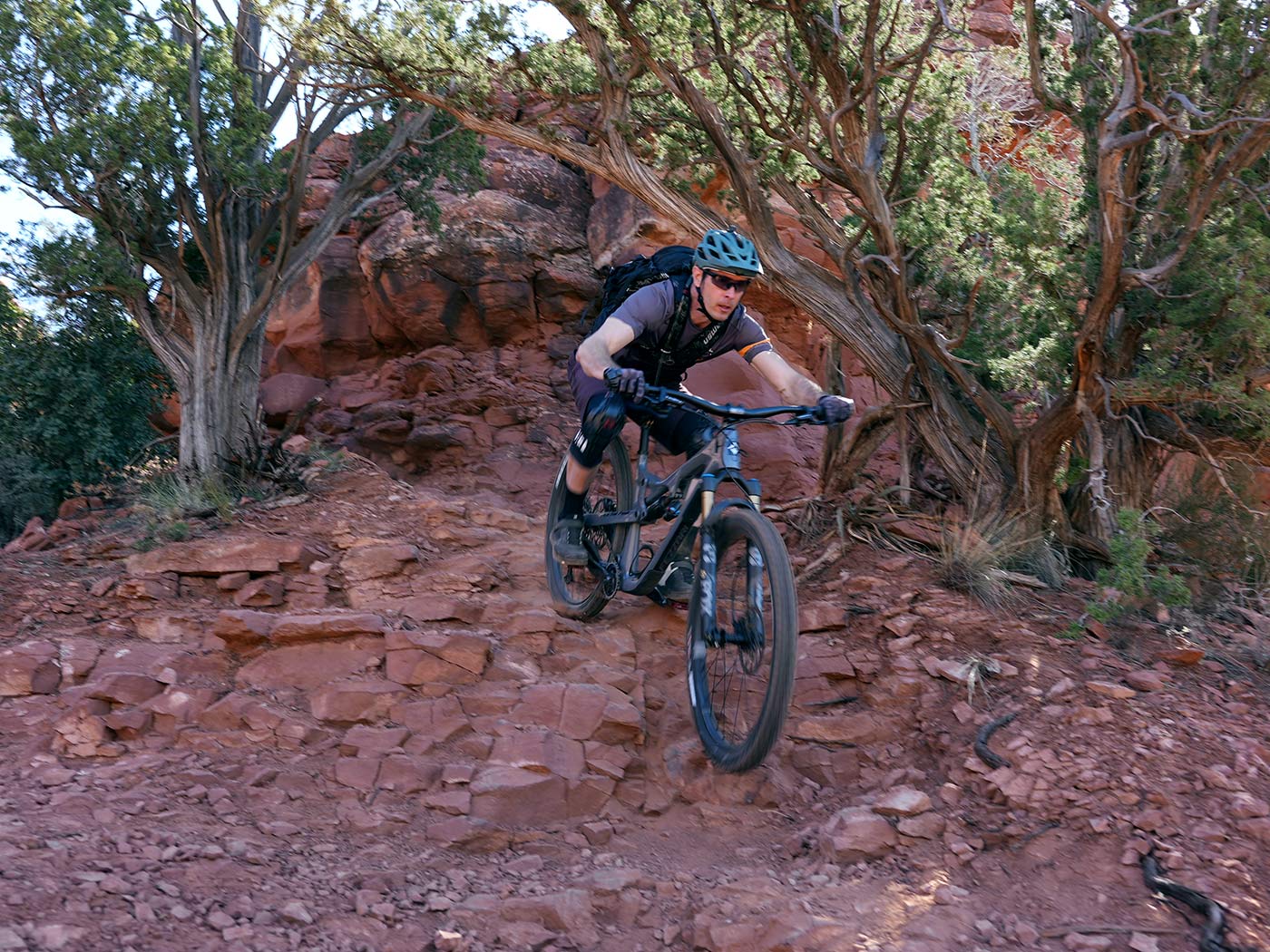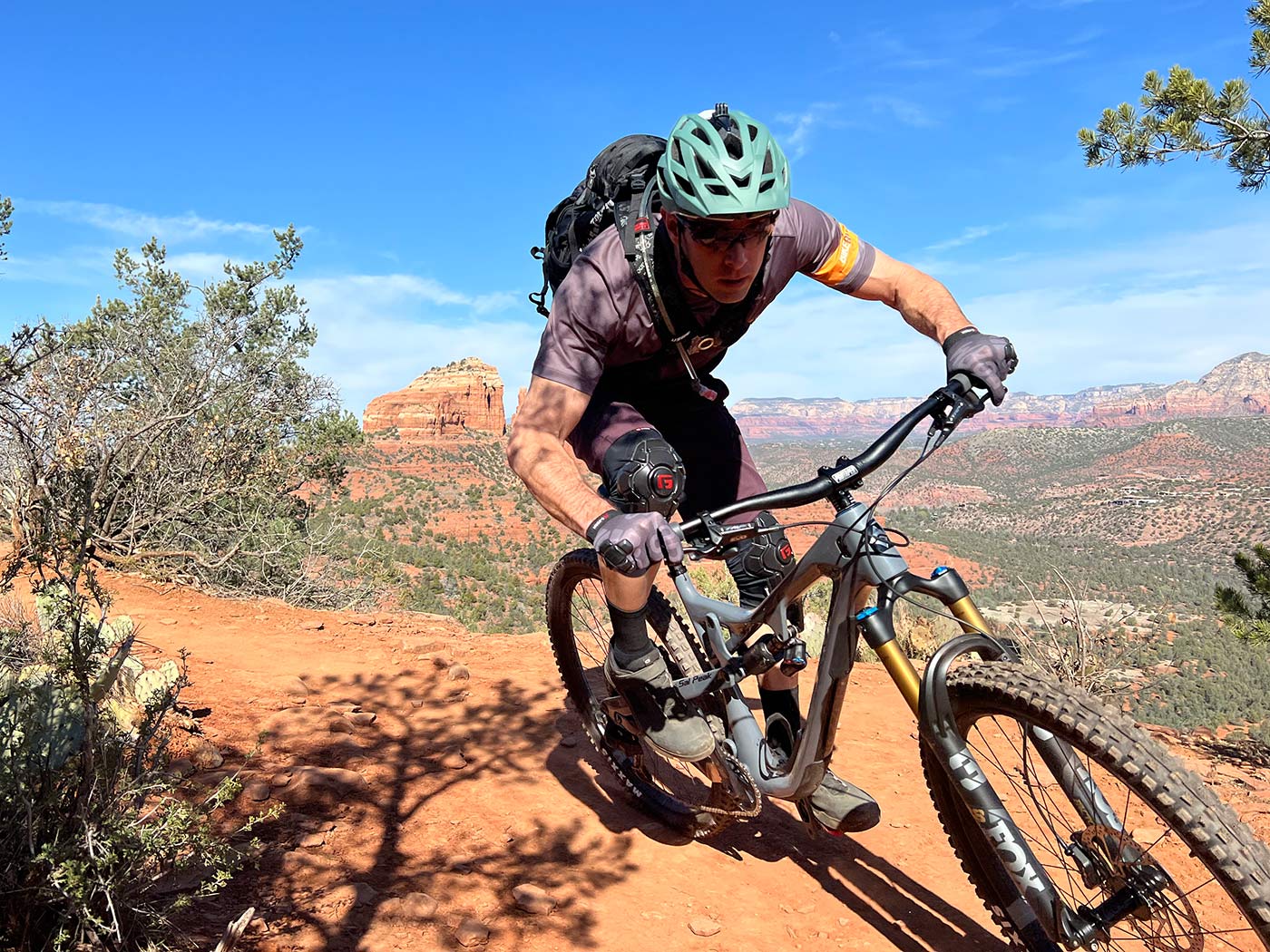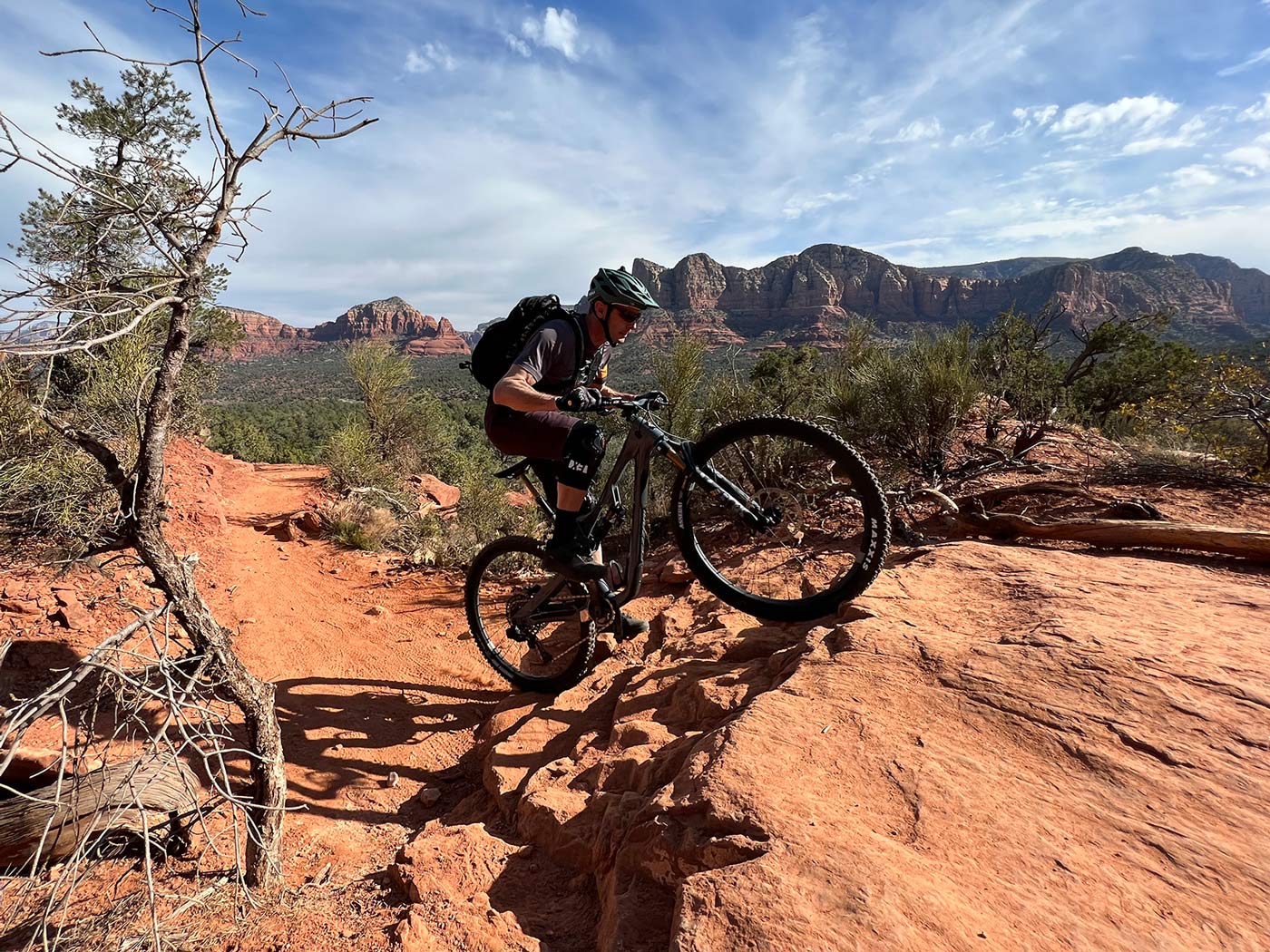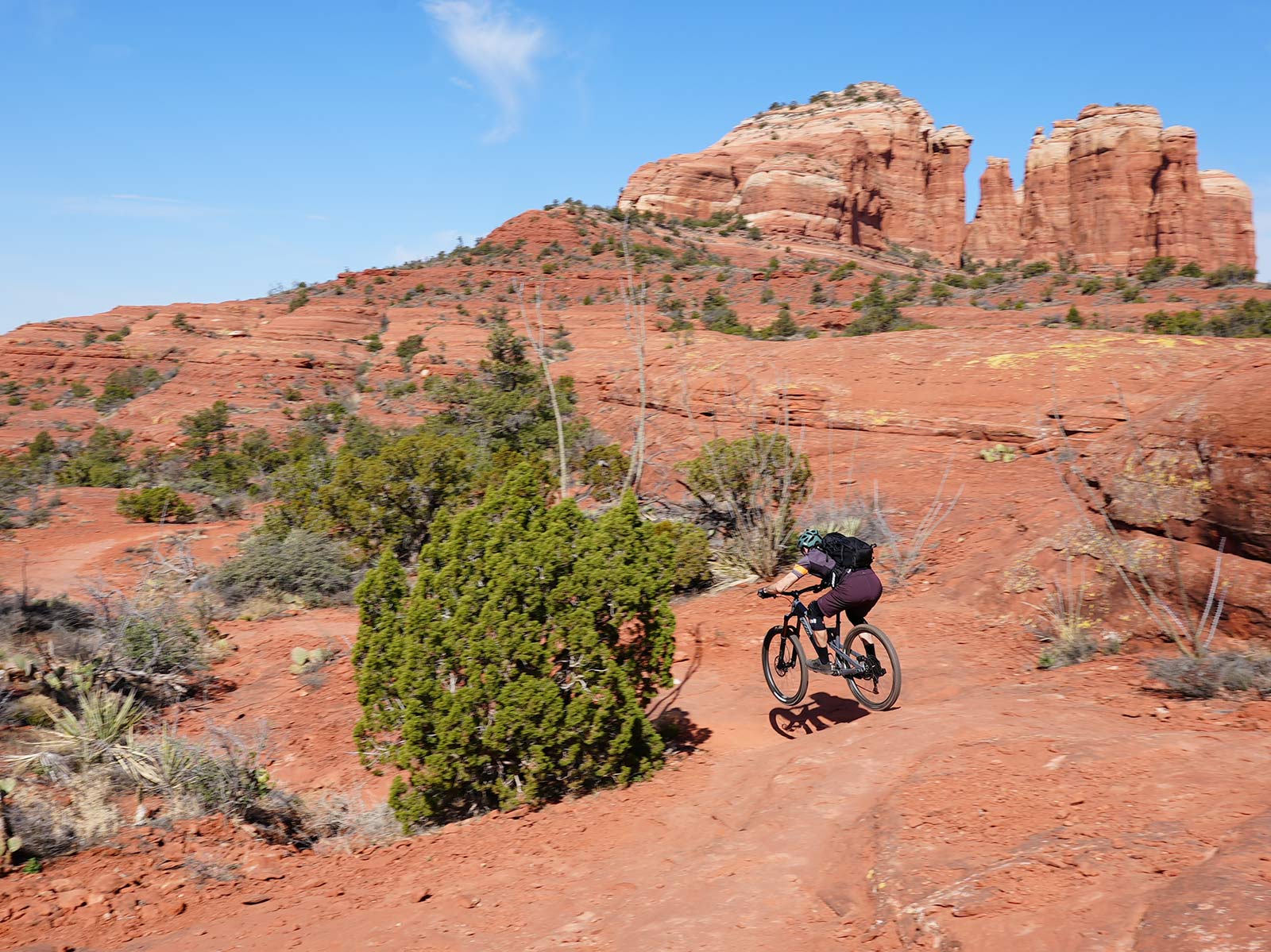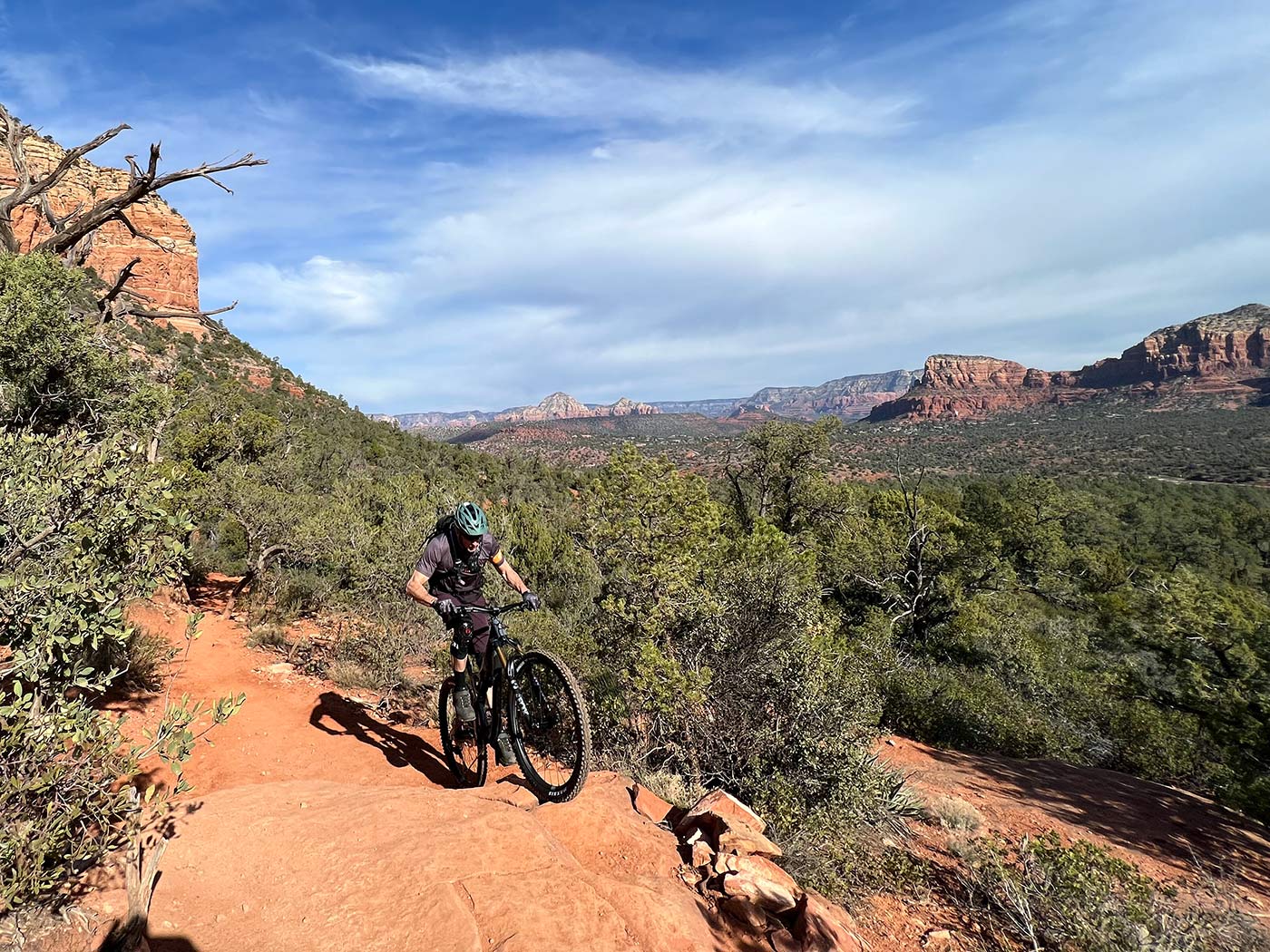The first time I threw a leg over the original Fezzari La Sal Peak, I knew it was different. And this time, it was like deja vu all over again.
The steep seat angle really makes me feel like I’m on top of the bike, much more so than anything I’ve ridden, including their own Delano Peak and Signal Peak mountain bikes. But why? And is that a bad thing?
The short answer is no, but when you first get on the bike, it’s gonna feel weird. Expect that, and just spec it with the longest possible travel dropper post you can, then get out on the trail and all will seem right. Here’s a quick closeup of some of the La Sal Peak 2.0’s features, then I’ll dive into the review…
Fezzari La Sal Peak 2.0 frame details
The new La Sal Peak is a full-fledged 29er enduro bike with 170mm of front and rear travel in stock form. Need more? Bump the fork to 180mm, or go with a 203mm travel dual crown fork if you really need to get rowdy. Want to reel it in a bit? Swap in a shorter stroke shock and reduce the rear travel to 160mm for a snappier ride.
A flip-chip lets you make things a bit steeper, which you’d only really want to use if you’re swapping in a 27.5″ rear wheel and tire to keep the geometry in balance.
Fezzari’s cable management is some of the best I’ve seen, keeping things quiet, rattle-free, and aiming in the right direction. A single bottle cage fits inside the front triangle, with mounts underneath for a second one (or tool wrap attachment).
An upper bash guard protects the frame from tailgates when you’re throwing it over the back of a truck bed. There’s a port for a rear shock remote lockout, but I didn’t see the need for it thanks to their efficient suspension design.
The La Sal Peak 2.0 fits up to 2.6″ tires, shown here with Maxxis 2.5″ Assegai (front) and DHF (rear) tires installed on Crank Brothers Synthesis alloy wheels.
Despite being stiffer and stronger than the first generation model, Fezzari carved about 100g out of the frame. Claimed weight is 2.6kg (5.7lb) for a size Medium, without shock. Check out the full launch story for all the tech details, geo chart, and pricing.
La Sal Peak 2.0 ride review

My test rides included Sedona’s infamous Hiline trail, followed by a more flowy ride on Adobe Jack. Hiline is arguably the most popular Expert-level trail in Sedona thanks to a mix of technical sections, slickrock, high exposure, flowing switchbacks, and challenging singletrack. Oh, and incredible views!
In other words, it’s the perfect test for a long-travel bike that’s meant to go fast and instill confidence, and the La Sal Peak delivered.
If you’ve never ridden Hiline, it’s a heckuva trail to test a new, unfamiliar bike on. While many of the drops are rollable, most benefit from carrying speed. The bike rode solid, and with a big Fox 38 up front, held its lines and made short work of the gnar even when I came in blind and at speed.
As you can see from the feature image at the top of this post, the bike is easy to get behind with the dropper all the way down. Even with the longest (offered) 200mm dropper post, though, the very low standover height meant I could have easily used a 220mm dropper.
That said, my but probably would have actually been sitting on the rear tire with the increased room, so maybe it’s best I didn’t have more dropper travel. But it illustrates just how low this bike sits, making it really easy to maneuver, so long as…
…you use the dropper.
With most bikes, I can get away with moderate dropper post usage, mainly sinking into it only on the descents. With the La Sal Peak, I couldn’t be as lazy. It rewarded using it even on the flowy, technical sections.
Basically, anytime I stood up to maneuver the bike, I benefitted by lowering the saddle a couple inches. More than any other bike I’ve ridden, this one keeps the saddle front and center, making me want to get it out of the way when I didn’t need it.
The upside to that positioning was on the climbs. To get to Hiline, you’ve gotta climb Slim Shady. And climb, and climb, and climb.
The La Sal Peak’s geometry combines with their efficient Tetra Link four-bar suspension design to deliver excellent climbing. Even on the short, punchy stuff like crawling, hopping, and lurching up rock faces, the bike just motors forward and maintains traction.
Landing drops was easy with so much travel to cushion it, and it all felt controlled. With a little trailside tweaking throughout the rides, we had the bike feeling extremely balanced, too.
Meaning, front and rear worked as a team, whether climbing or descending, which gave it a pleasantly neutral feeling that didn’t distract from the ride. Small stuff disappeared, traction remained, and the big hits didn’t slow me down.
It was also quite balanced in the handling. It’s easy to maneuver, and only had a tiny bit of wander on extremely low speed climbs…which is to be expected on any bike with this much travel and a slack 64º head angle.
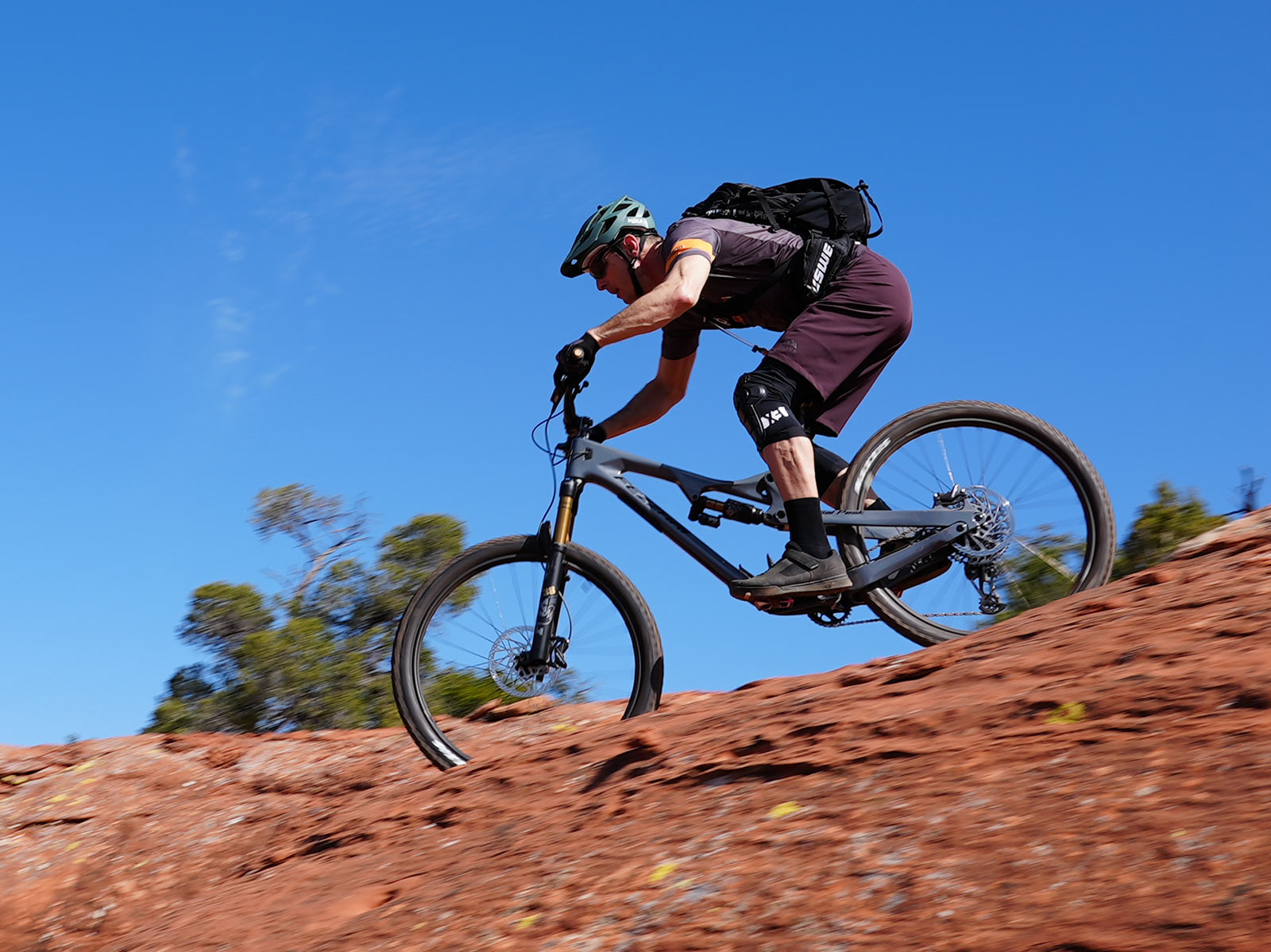
If 170mm of travel sounds like a lot, it is. Fezzari’s PM Tyler Cloward said the increased travel on this new model not only gave them a proper enduro bike, it also made a clearer distinction between the La Sal Peak and Delano Peak, firmly cementing the latter as their “trail” bike.
Surprisingly, even with this much travel, the bike pedals like a short travel bike and climbs like a goat, then delivers all the downhill travel and speed you could want. Definitely worth a look if you’re seeking an enduro mountain bike to crush the descents then quickly pedal back up to do it again.
